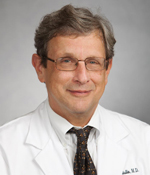Chronic thromboembolic pulmonary hypertension is a life-threatening condition in which the clinical approach continues to evolve. ATS 2014 will shed light on the diagnosis, treatment and management of this condition during “Chronic Thromboembolic Pulmonary Hypertension and UCSD: Going Beyond 3,000 PTEs” from 2 to 4:30 p.m. Wednesday in Room 6 B (Upper Level) of the San Diego Convention Center.
In 2013, the University of California, San Diego, Medical Center performed its 3,000th pulmonary thromboendarterectomy to treat CTEPH. In this symposium, experienced faculty from UCSD will review the history, pathophysiology, optimal diagnostic approach, and state-of-the-art management of this condition.
The program is geared toward pulmonologists, surgeons, and other providers who are involved in the care of patients with pulmonary hypertension and CTEPH, specifically general pulmonologists who care for patients with unexplained dyspnea in whom pulmonary hypertension and CTEPH comprise elements of the differential diagnosis.

Jess Mandel
“CTEPH is an under recognized, potentially fatal condition,” says Jess Mandel, MD, professor of medicine and associate dean for undergraduate medical education at the UCSD School of Medicine. “UCSD has more experience with this condition than any other center in the world, and, with ATS in San Diego, it is a great opportunity to share this expertise with attendees from around the globe.”
Dr. Mandel is a co-chair of the symposium with his colleague, Peter Fedullo, MD, professor of medicine and chief of staff at UCSD Medical Center, and director of the Medical ICU at the UCSD Hillcrest facility.

Peter Fedullo
“CTEPH is a disease in which the presentation may be subtle, and the management requires ample experience and judgment,” Dr. Fedullo says. “Although pulmonary endarterectomy represents the definitive intervention for this disease, earlier this year the FDA approved riociguat as a pharmacologic therapy for inoperable CTEPH and for post-endarterectomy residual pulmonary hypertension, making the issue of patient selection for medical and surgical management strategies critical.”
The seven presenters—all from UCSD—will describe the evolution of acute PE to CTEPH; the history of CTEPH and PTE; and diagnostic pearls and challenges, surgical advances, peri-operative management, the role of medical therapy, and future directions for CTEPH. The talks will be followed by a panel discussion.
Planners hope attendees will leave with a greater ability to consider and pursue the diagnosis of CTEPH effectively in appropriate patients, to understand perioperative management principles of CTEPH, and to understand the appropriate roles of surgical and medical therapies in CTEPH.
“We hope that the symposium will provide both cutting-edge material that helps physicians care for patients who might have CTEPH, but also contextualize the disease in ways that permit them to educate their patients optimally about the condition,” Dr. Mandel says.
Dr. Fedullo notes that the goals of the symposium are to emerge with a firm grasp of the pathophysiology and clinical presentation of CTEPH, a sense of the state-of-the-art management of the condition, a historical perspective on the disease, and a sense of where the field is headed in the future.
This program was organized by the Assemblies on Clinical Problems; Microbiology, Tuberculosis and Pulmonary Infections; and Pulmonary Circulation.
